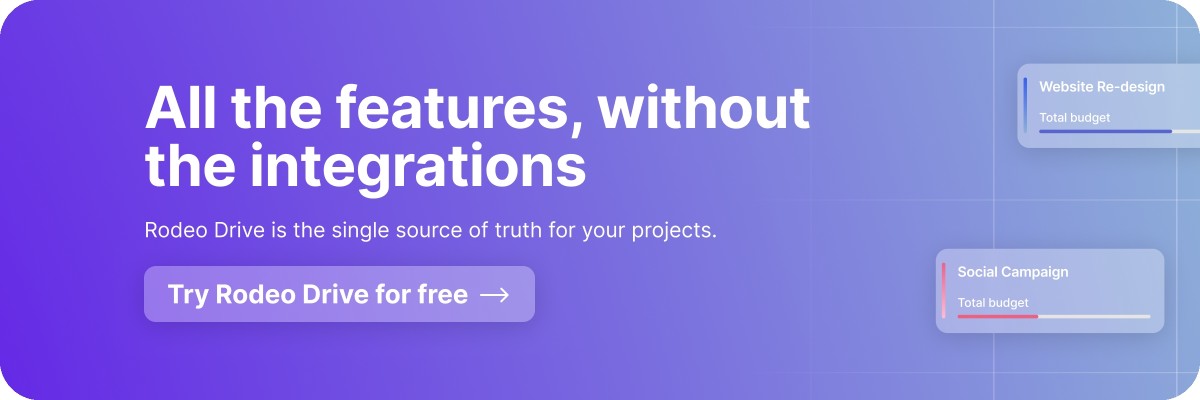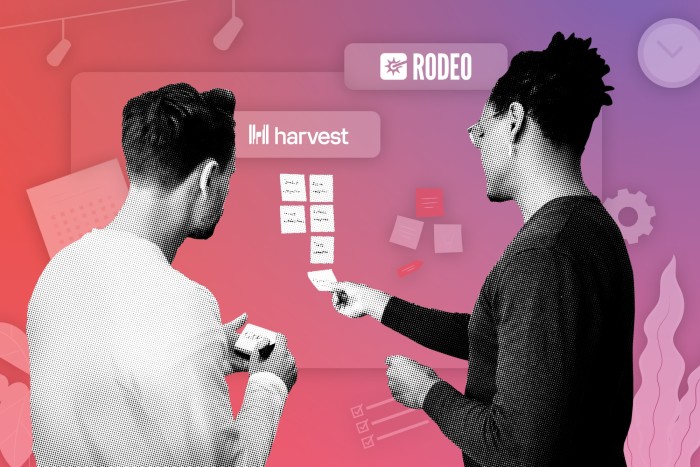A Comprehensive Comparison of 12 LiquidPlanner Alternatives
Navigating the world of project management tools can be daunting, especially when looking for a solution that perfectly aligns with your team's needs and workflow.
One such tool that has gained popularity for its unique approach is LiquidPlanner. With its dynamic and fluid project management capabilities, LiquidPlanner has been a go-to choice for many teams aiming to easily manage complex projects.
However, the landscape of project management software is ever-evolving, offering a plethora of alternatives that cater to different preferences and requirements. In this blog, we'll take a deep dive into the realm of LiquidPlanner alternatives, exploring the strengths and weaknesses of various options.
Why should I look for a LiquidPlanner alternative?
While LiquidPlanner offers unique features that suit specific workflows, your team’s needs and preferences might leave you looking for an alternative option.
Here are the three most common reasons why teams find themselves looking for LiquidPlanner alternatives:
It can be a pricey tool
LiquidPlanner is a robust project management tool, but its features come at a cost. If budget constraints concern your team, exploring alternatives can help you find a solution that offers similar capabilities at a more affordable price point.
This Capterra review mentions how LiquidPlanner’s high price in addition to its other drawbacks can cause issues for new users:
“While LiquidPlanner is a great tool, there are a few drawbacks. The cost of the software can be quite expensive for a small business, and the learning curve can be quite steep for new users. Additionally, the customer support could be improved, as sometimes it can take a while for them to respond to inquiries.”
Steep learning curve
LiquidPlanner's dynamic scheduling and resource management can be powerful, but they might also introduce complexity that some teams find overwhelming.
According to this G2 review, it can be tricky to onboard teams:
"Well, there is nothing much to dislike about it as it provides an immense amount of features in comparison to any other project management system but I think the complexity to understand this system is a big issue."
Lacking financial insights
An alternative tool might provide a more tailored solution if your team heavily relies on financial project data, like this user who reviewed LiquidPlanner:
“LiquidPlanner does not provide basic financial features that would allow our team to know where we are on project scheduling AND budget.”
12 LiquidPlanner alternatives to consider
Having delved into the considerations surrounding LiquidPlanner’s drawbacks, it's time to explore the most promising alternatives currently on the market.
1. Rodeo Drive
Rodeo Drive ends fragmented workflows by integrating budgeting, time tracking, invoicing, and reporting functionalities into one software tool, providing a comprehensive solution that spans your project's lifecycle.
Let's explore Rodeo Drive’s features in more detail:
Designed to optimise your profit margin
Rodeo Drive's budgeting feature allows project managers to build their budgets one phase at a time, which helps establish accurate expectations regarding what everything will cost, allowing you to make tweaks when needed. This way, no surprise financial curveballs will come your way.
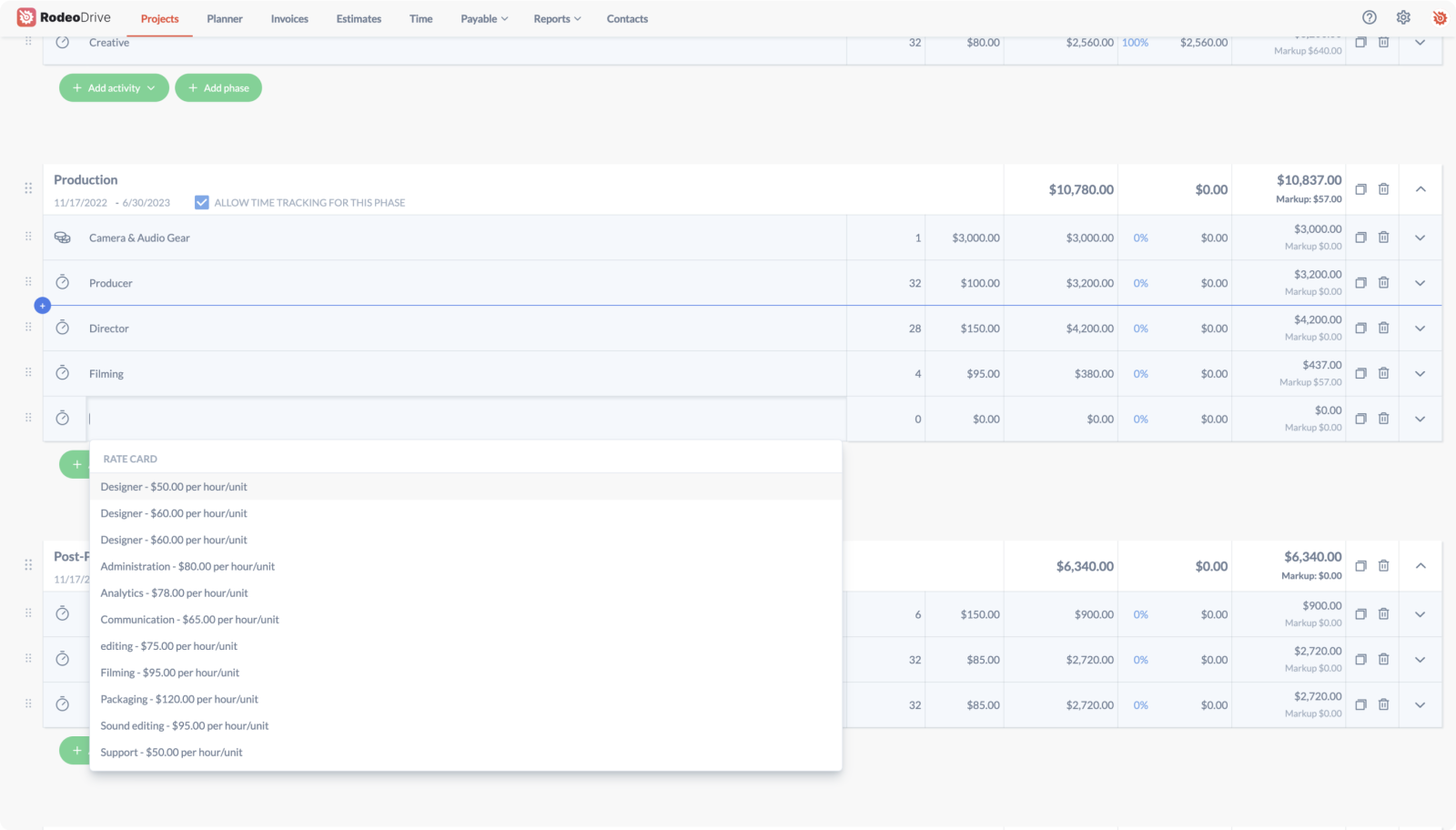
Building a budget in Rodeo Drive
The project setup process in Rodeo Drive isn't complex either. Rodeo Drive offers guidance, suggesting you begin with a phased budget. This approach enhances your ability to visualise and control the costs of individual project segments before commencing the work.
Time tracking made easy
In Rodeo Drive, all features play together. Every action logged has to link to a budget activity. So, as you and your team knock out tasks, your budget gets automatically updated, showing you how much of it you've used up.
Managing time can be cumbersome, so Rodeo Drive offers two convenient time-tracking methods. You can initiate the stopwatch on your planner when you start a task or add a time card later if you forget.
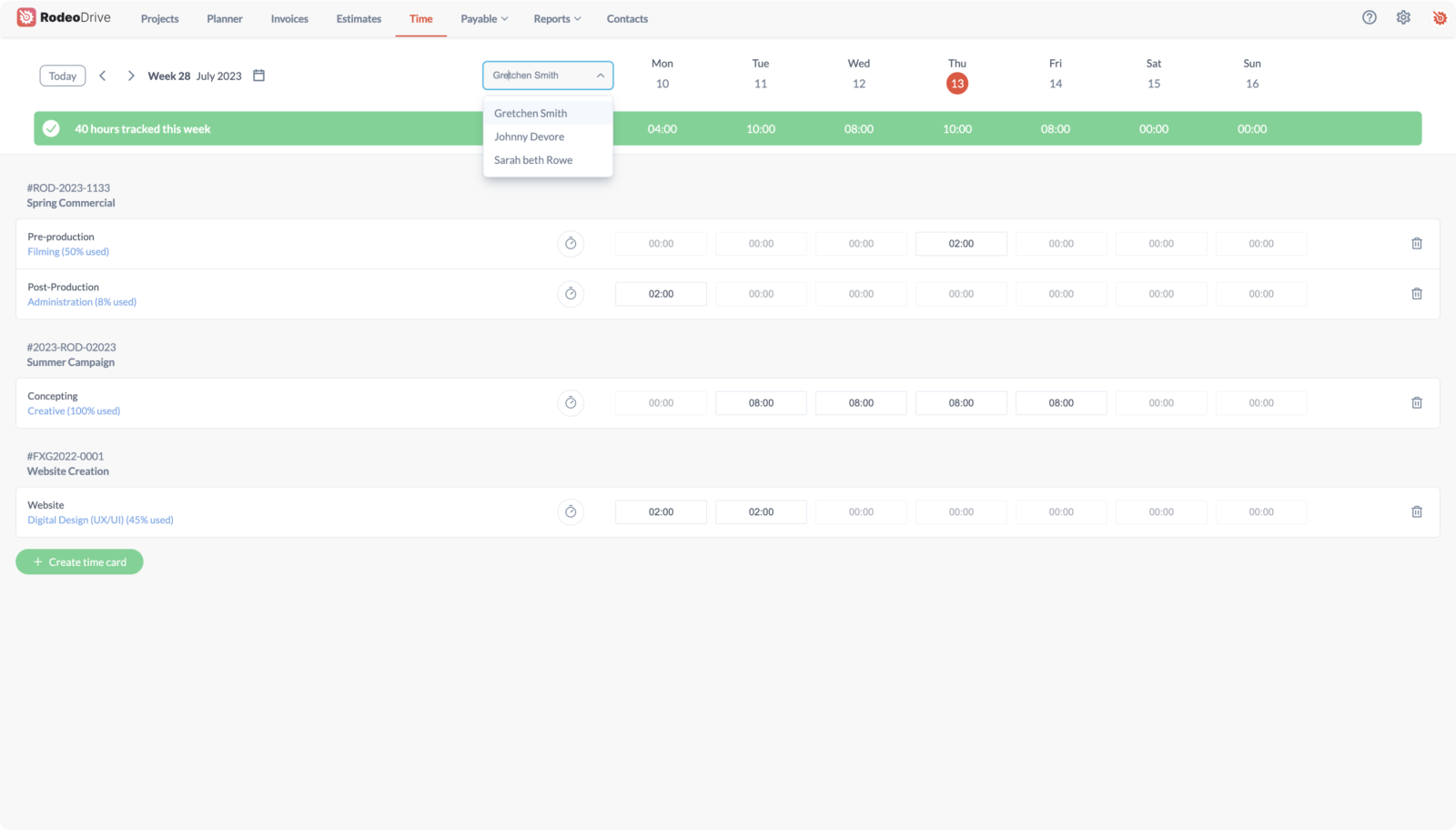
Rodeo Drive's Time page
Detailed insights
You can only properly keep tabs on your project if you have the data to back it up. Rodeo Drive assembles your data in the "Reports" tab based on the team's usage of the platform. The insights reflect the financial health of projects, the team's time registration, and productivity.
These reporting metrics allow teams to dig deep into their project progress and tweak their game plan as necessary.
.png)
Rodeo Drive's Projects report
All the reports can be filtered based on the project, team member, or client. Additionally, it’s possible to export your data as an Excel or CSV file, enabling further customisation and analysis as needed.
Rodeo Drive’s additional features
- Planner: Plan and create tasks in a timeline view to better manage the workload.
- Contact management: Keep all your client and vendor information in one place.
- Multilanguage: You can easily switch languages in Rodeo Drive by selecting Dutch or English under ‘Preferred language.’
- Quickbooks (US) and Xero (UK) integration: To assist you with your bookkeeping needs.
- Create and send client-ready invoices and estimates: Rodeo Drive uses logged hours data to generate invoices, eliminating manual calculations.
Rodeo Drive’s weaknesses
-
While there is no mobile application just yet, it’s definitely on Rodeo Drive’s roadmap.
Rodeo Drive’s pricing
Tailored to accommodate businesses of varying sizes and financial capacities, Rodeo Drive has a remarkably clear-cut pricing structure:
- Free plan: Encompasses all fundamental tools required for proficient project management.
- Achiever plan: Priced at $14.99 per user per month for unlimited access to all features, including advanced features such as in-depth reporting.
Start your Rodeo Drive journey with a free account today — no credit card information is necessary.
2. Kantata
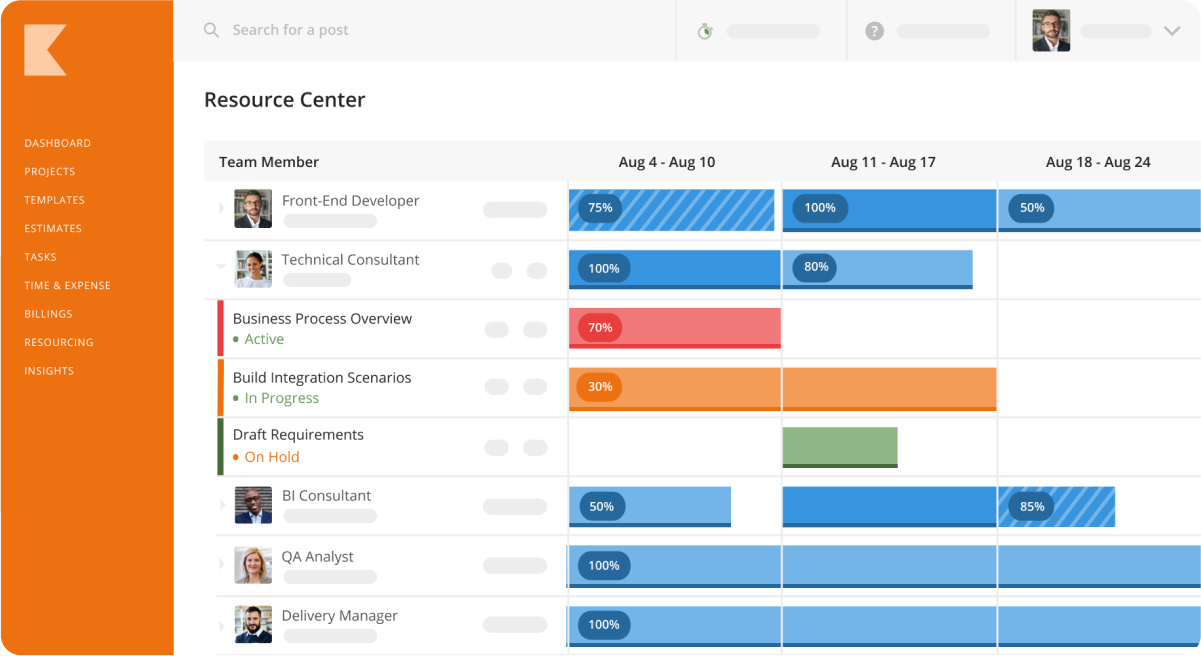
Source: Kantata
Kantata empowers teams to oversee milestones and cultivate productive collaboration with efficient allocation and management of resources.
Formerly recognised as Mavenlink, this tool has garnered acclaim for its prowess in tracking project progress with plenty of features supporting day-to-day project management.
Related: 12 Best Kantata Alternatives for Project Management
Kantata’s popular features
- Capacity planning
- Project budgeting
- Forecasting
- Dashboards
Kantata's weaknesses
- Some users have reported that recently added features require an additional license and cost.
- The experience with the customer service team is not always quick or sufficient.
Kantata’s pricing
Kantata keeps its pricing undisclosed. You can inquire about their pricing plans by submitting a request through their website.
3. Smartsheet
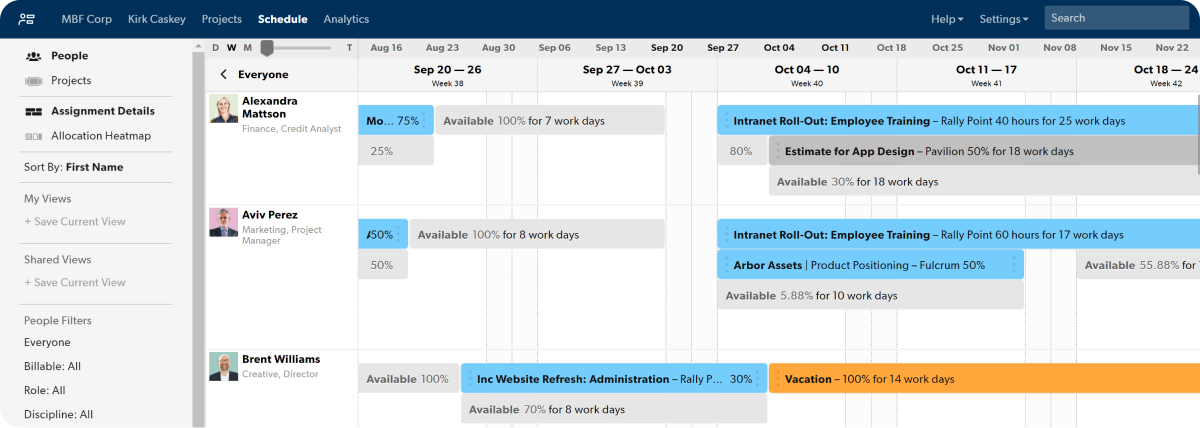
Source: Smartsheet
Smartsheet truly shines in the domains of time management and project budget oversight. The platform holds robust functionalities, enabling you to monitor and administer project schedules and financial elements.
If you're seeking a tool with a user-friendly interface reminiscent of spreadsheets, Smartsheet is a compelling alternative to LiquidPlanner that deserves your attention.
Also read: Smartsheet Alternatives: A Review of the Best Competing Software
Smartsheet’s popular features
- Task management
- Custom workflow automation
- Content management
- Templates
Smartsheet’s weaknesses
- The business plan can be quite pricey.
- Some advanced features have a learning curve.
Smartsheet’s pricing
- Free plan: $0 for 1 user
- Pro plan: $9 per user/month
- Business plan: $32 per user/month
- Contact sales for an enterprise plan
4. Asana
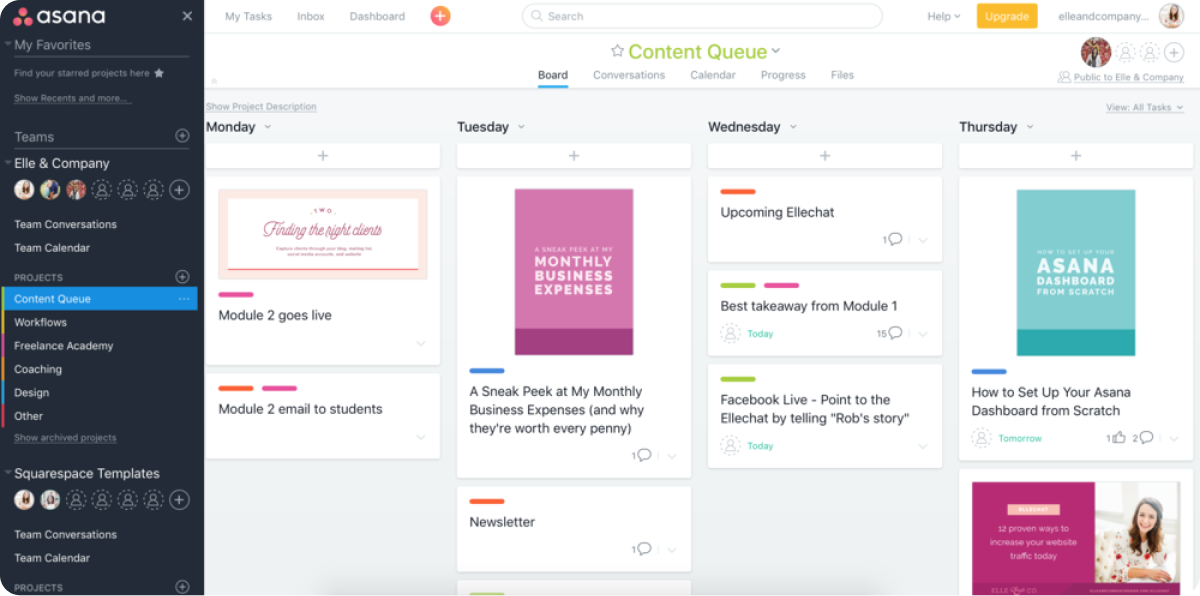
Source: Asana
Asana distinguishes itself through its easily navigable interface and instinctive user experience. This widely acclaimed software furnishes an array of attributes for streamlined task administration, various adaptable perspectives, and the ability to incorporate significant milestones within your projects.
Also read: Top 20 Asana Alternatives to Consider
Asana’s popular features
- Project map
- Milestones
- Task prioritisation
- Dashboards
- Templates
Asana’s weaknesses
- Some users find the interface a little cluttered.
- Asana doesn’t offer extensive reporting functionalities.
Asana’s pricing
- Free plan
- Premium plan: $13.49 per user/month
- Business plan: $30.49 per user/month
- Enterprise plan: pricing available upon request
5. Planview AdaptiveWork
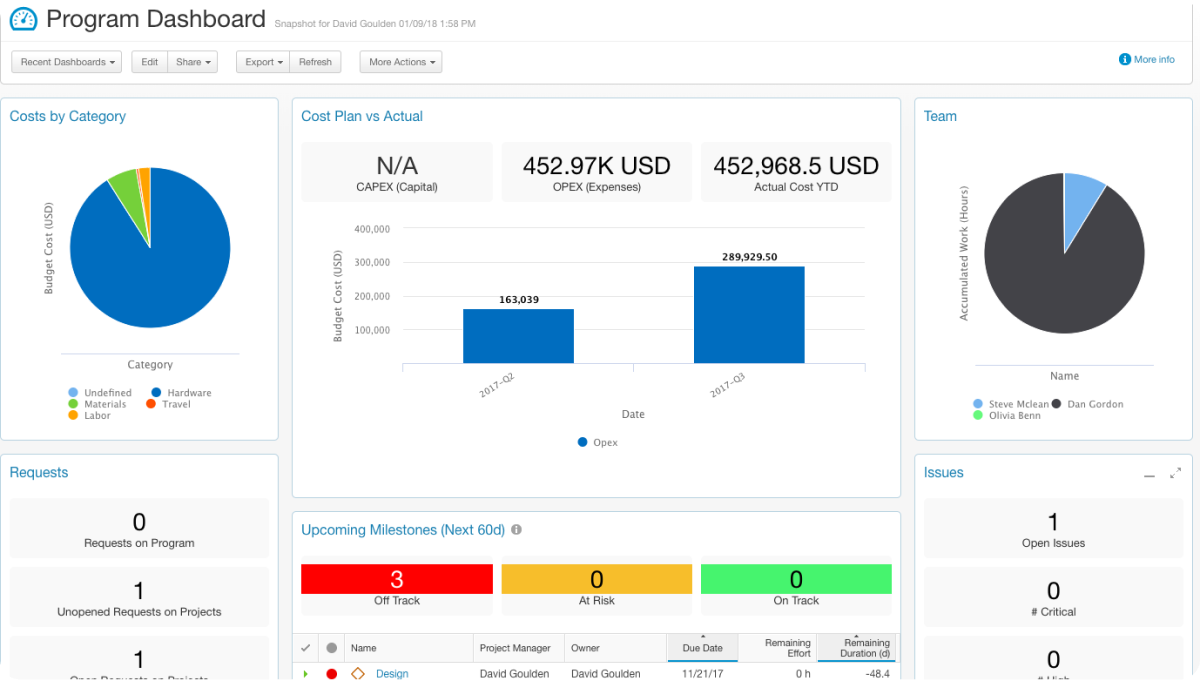
Source: Planview AdaptiveWork
AdaptiveWork is a project portfolio management and professional services automation software designed to enhance productivity. The platform allows teams to tailor their work methods to their preferences, gaining instantaneous insights into all ongoing tasks and projects.
AdaptiveWork’s popular features
- Planning
- Dependencies
- Risk analytics
- Resource allocation
AdaptiveWork’s weaknesses
-
Users mention that the tool is difficult to set up.
AdaptiveWork’s pricing
Planview doesn’t disclose any pricing information on its website. Contact sales to request plans.
6. Teamwork
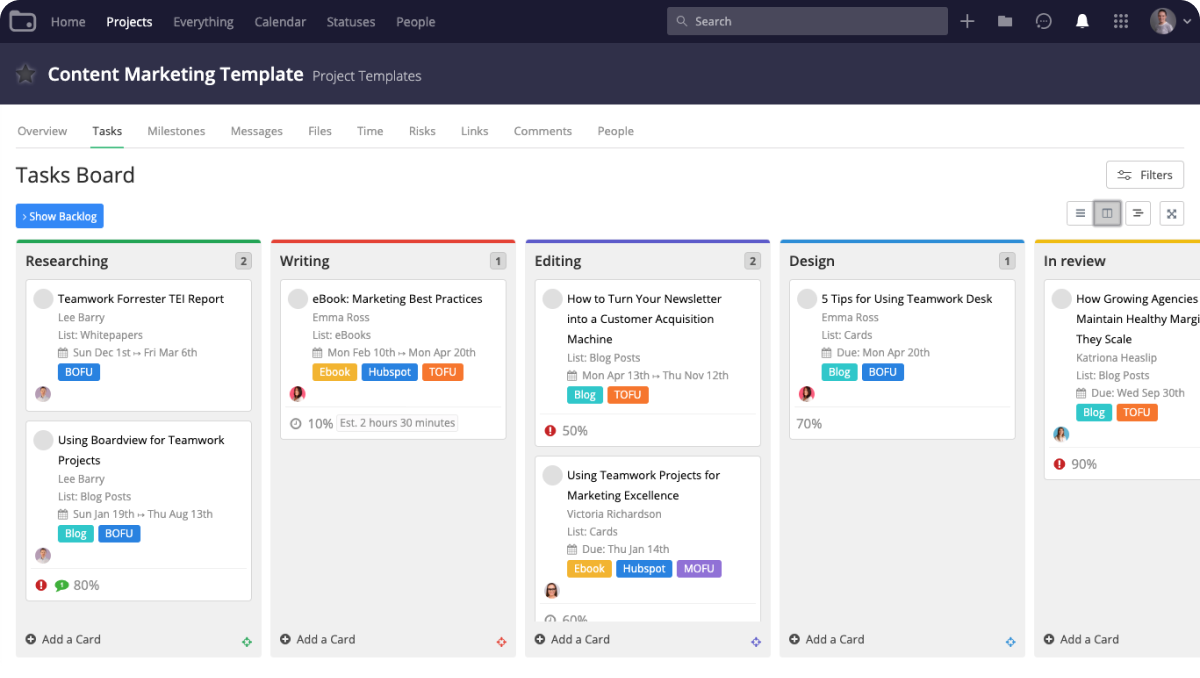
Source: Teamwork
Teamwork was developed to help creative professionals to collaborate in one place. The software allows teams to build project budgets and track time. Plus, the proofing and client contact functionalities help streamline project communication.
Also read: 20 Best Teamwork Alternatives [In Depth Review]
Teamwork’s popular features
- Resource management
- Time tracking
- Budgeting and profitability
- Templates
Teamwork’s weaknesses
- The pricing can add up for small teams who do require Teamwork’s templates or other features only available in the more expensive packages.
- The platform has a learning curve.
Teamwork’s pricing
- Free forever plan: $0 for up to 5 users
- Starter plan: $8.99 per user/month (3 user minimum)
- Deliver plan: $13.99 per user/month (3 user minimum)
- Grow plan: $25.99 per user/month (5 user minimum)
7. Trello
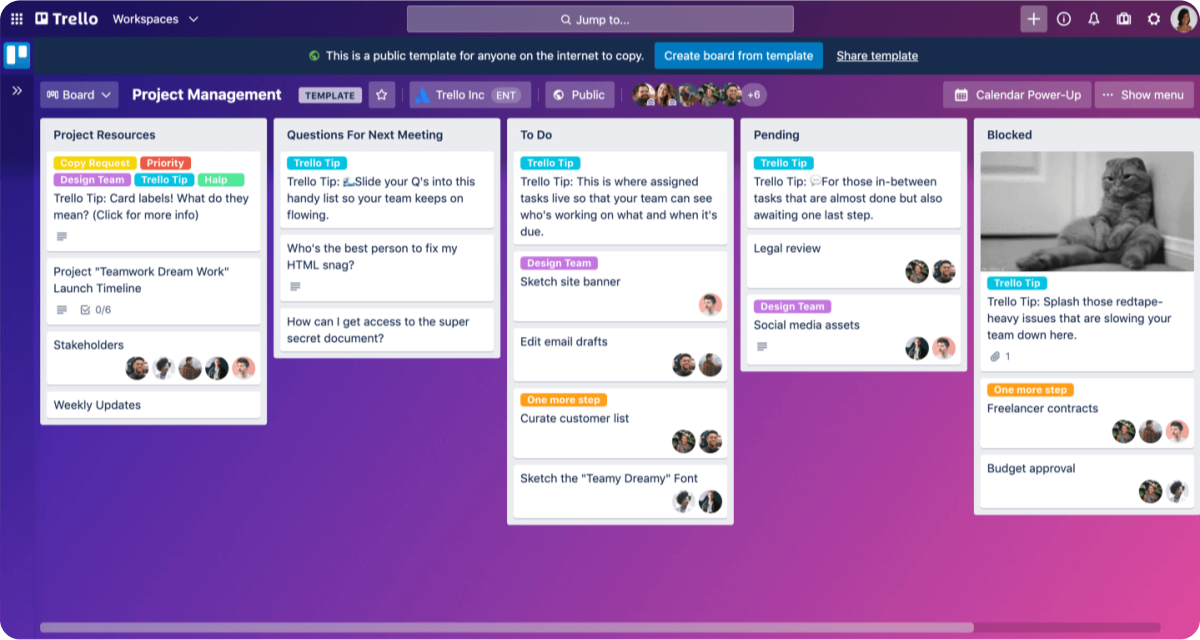
Source: Trello
Trello empowers individuals to establish boards for task organisation using cards. These cards can seamlessly transition between various phases and are assigned to designated team members.
Trello aims to give users a comprehensive perspective of their undertakings and assignments. It proves especially advantageous for devising checklists and tracking the advancement of projects.
Related: Top 22 Trello Alternatives for Project Management [Free & Paid]
Trello’s popular features
- To-do lists
- Recurring tasks
- Project planning
- Dependencies
Trello’s weaknesses
- Trello lacks reports and analytics.
- The tool can be tricky to use during larger projects with more complexity.
Trello’s pricing
- Free Plan
- Standard: $6 user/month
- Premium: $12.50 user/month
- Enterprise: $17.50 user/month
8. Basecamp
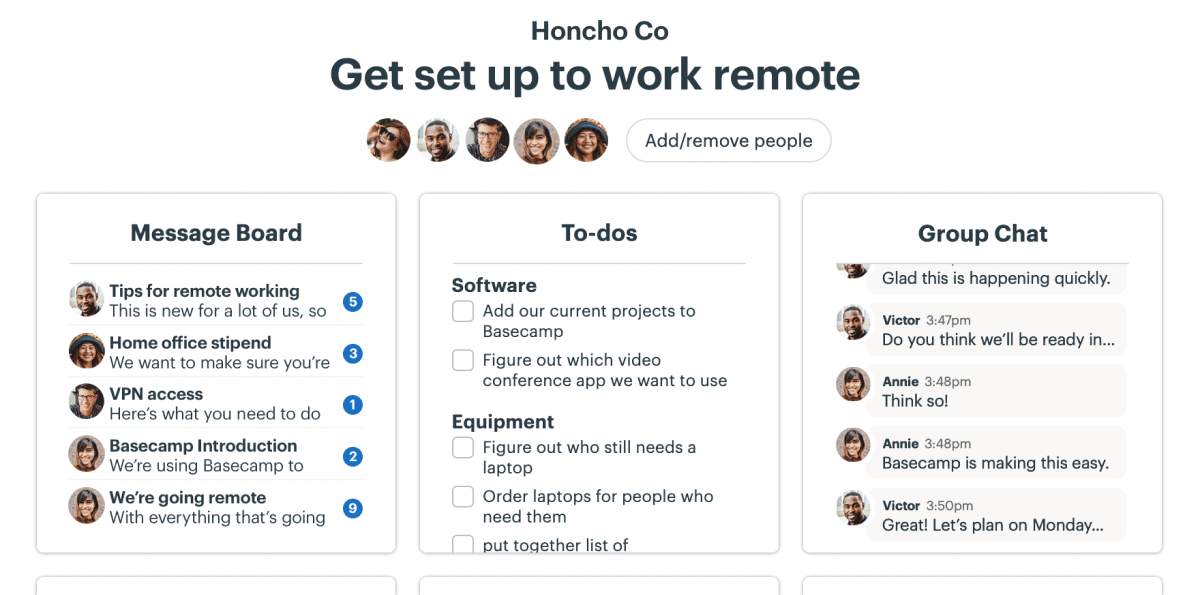
Source: Basecamp
Basecamp helps teams get their work organised. While initially catering to larger teams, Basecamp has recently diversified its offerings to encompass an individual plan tailored to smaller teams and freelancers. The platform has gained acclaim for fostering efficient team connectivity through group chats and automated check-ins.
Also read: Basecamp Alternatives: A Deep Dive into the Best Competitors
Basecamp’s popular features
- File sharing
- To-do lists
- Direct messaging
- Docs and files
Basecamp’s weaknesses
- The flat fee pricing structure doesn’t fit everyone.
- The search function isn’t easy to use.
Basecamp’s pricing
- Individual plan: $15 per user/month
- Pro unlimited plan: $349 per month for unlimited users
9. ClickUp
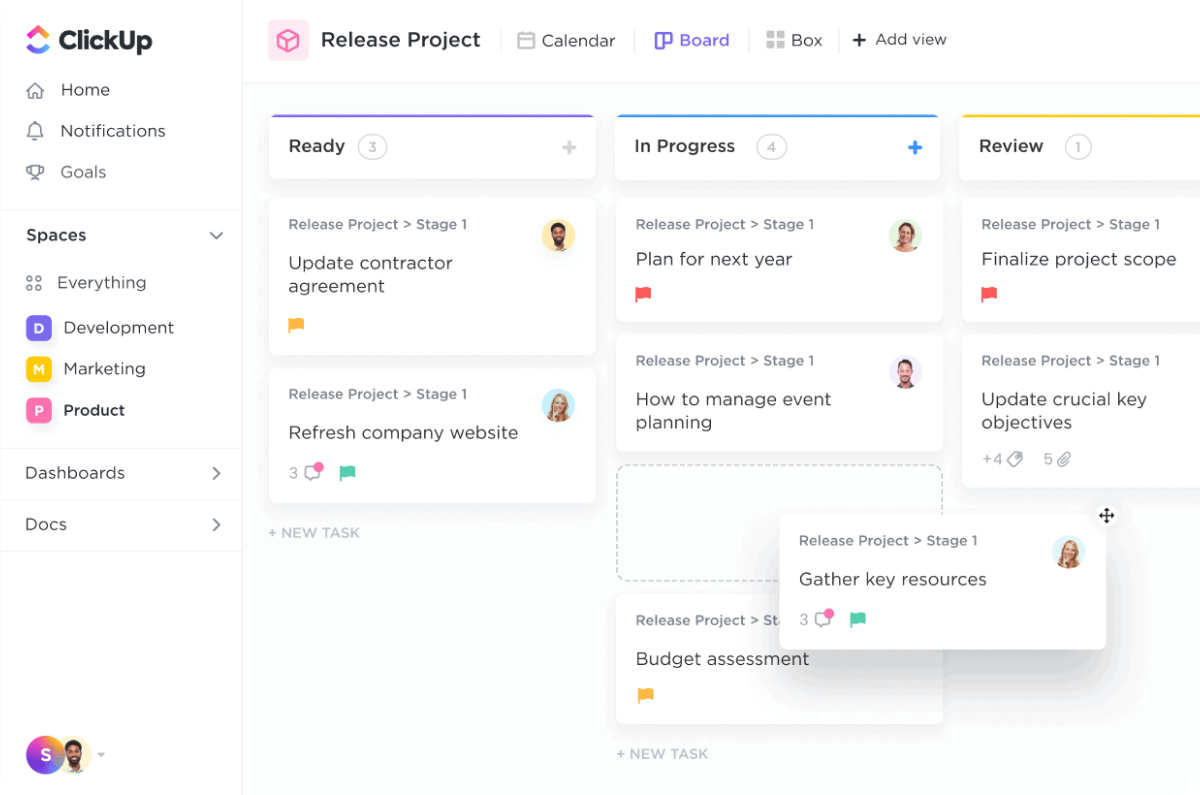
Source: ClickUp
ClickUp positions itself as a comprehensive solution, and it does fulfill this commitment to a certain degree. The tool enables tasks like sending client estimates, team time management, and more. Besides, ClickUp’s customizability is one of its main selling points.
Also read: Top 20 ClickUp Alternatives to Try [Free & Paid]
ClickUp’s popular features
- Goal tracking
- Task management
- Whiteboards
- Chat
- Resource planning
ClickUp’s weaknesses
- The reload speed and instant updating if another team member works on a list simultaneously can be highly frustrating for users.
- One of the main complaints about ClickUp is that the extensive feature list can lead to an intensive set-up process and a learning curve for new users.
ClickUp’s pricing
- Free forever plan: $0 for 5 workspaces
- Unlimited plan: $9 per user/month
- Business plan: $19 per user/month
- Business Plus plan: $29 per user/month
- Ask sales for an enterprise plan
10. Clockify
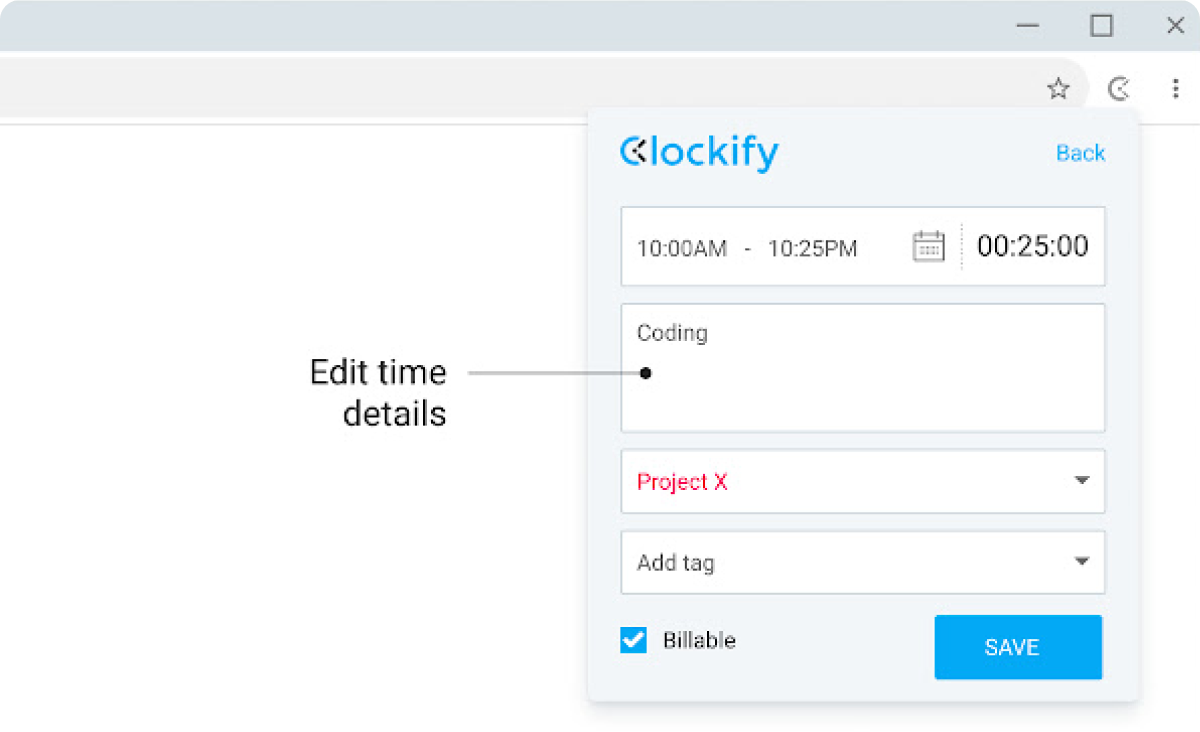
Source: Clockify
Clockify is a time-tracking and productivity tool that allows individuals and teams to monitor how they spend their time on tasks and projects. It helps users track their work hours, log time spent on specific activities, and manage projects more effectively. Clockify offers both web-based and mobile applications.
Clockify’s popular features
- Time tracker
- Timesheets
- Reporting
- Expenses & invoicing
Clockify’s weaknesses
-
Many users say the user interface feels outdated.
Clockify’s pricing
- Free plan
- Basic: $4.99 per user/month
- Standard: $6.99 per user/month
- Pro: $9.99 per user/month
- Enterprise: $14.99 per user/month
11. Nifty
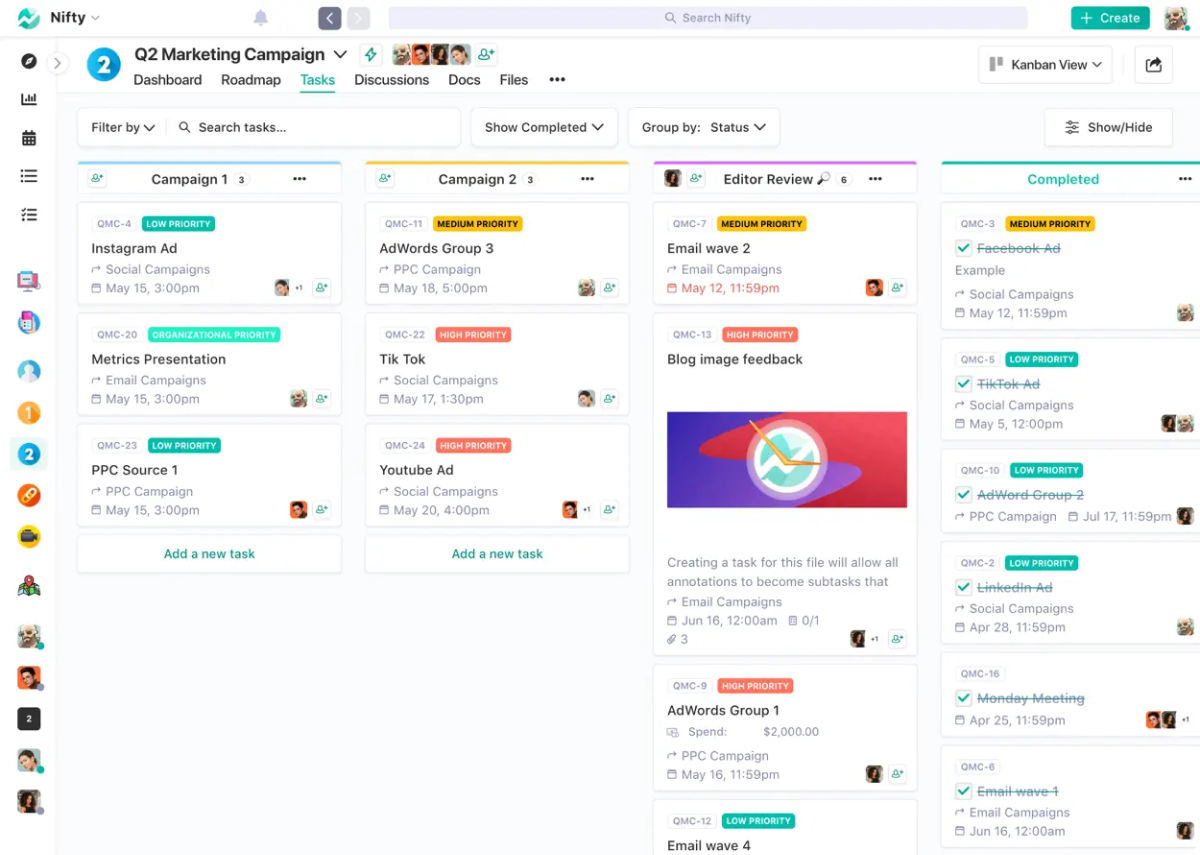
Source: Nifty
Nifty integrates chat, tasks, goals, documents, and files into one centralised platform. The software allows users to manage tasks through Kanban, list, and timeline views.
Nifty is built to encourage cross-departmental team collaboration through discussion features.
Nifty’s popular features
- Project portfolios
- Task management
- Discussions
- Roadmaps
Nifty’s weaknesses
-
Some users might find the interface a bit cluttered, especially if unfamiliar with project management software.
Nifty’s pricing
- Free plan
- Starter: $9 per user/month
- Pro: $16 per user/month
- Business: $25 per user/month
- Enterprise: contact sales for pricing information
12. Monday.com
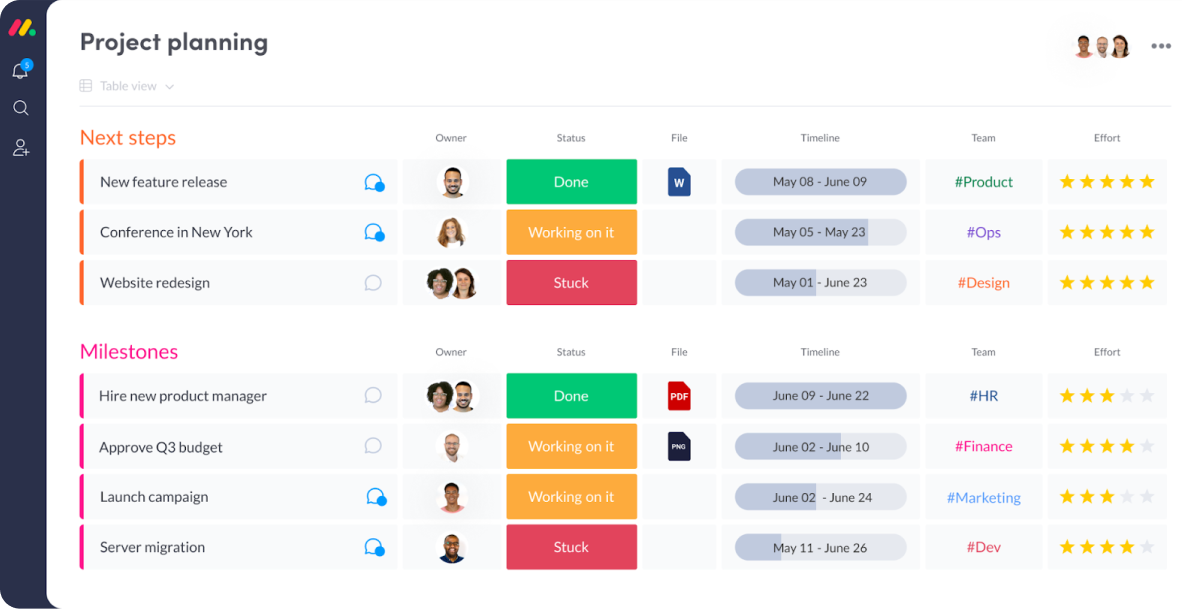
Source: monday.com
Monday's vibrant interface might seem familiar, given its surge in popularity. Its multifunctional features, including real-time dashboards and Kanban boards, cater to diverse teams, from digital marketing teams to product development.
Related: Top 25 Monday Alternatives to Try
Monday’s popular features
- Dashboards
- Real-time document collaboration
- Task planning
- Forms & automations
Monday’s weaknesses
-
The tool requires some technical proficiency to make the most out of the features.
monday’s pricing
- Individual plan: Free for up to 2 users
- Basic plan: $10 per user/month
- Standard plan: $12 per user/month
- Pro plan: $20 per user/month
- Enterprise plan: Contact sales
Note: All paid plans require a minimum of 3 users.
Takeaway
Now that we’ve presented the top LiquidPlanner alternatives, the optimal choice will depend on your team's distinct requirements. Platforms with intuitive interfaces, such as Teamwork, might be most suitable if you work at a startup or in a small team.
For those orchestrating expansive operations with intricate projects, alternatives like Kantata might align better.
Meanwhile, Rodeo Drive has an array of inbuilt functionalities to track project progress and profitability for those searching for a comprehensive, approachable solution that avoids overwhelming complexity.
To explore Rodeo Drive further, get started for free without any obligations. Or, schedule a demo to learn more about the tool.






